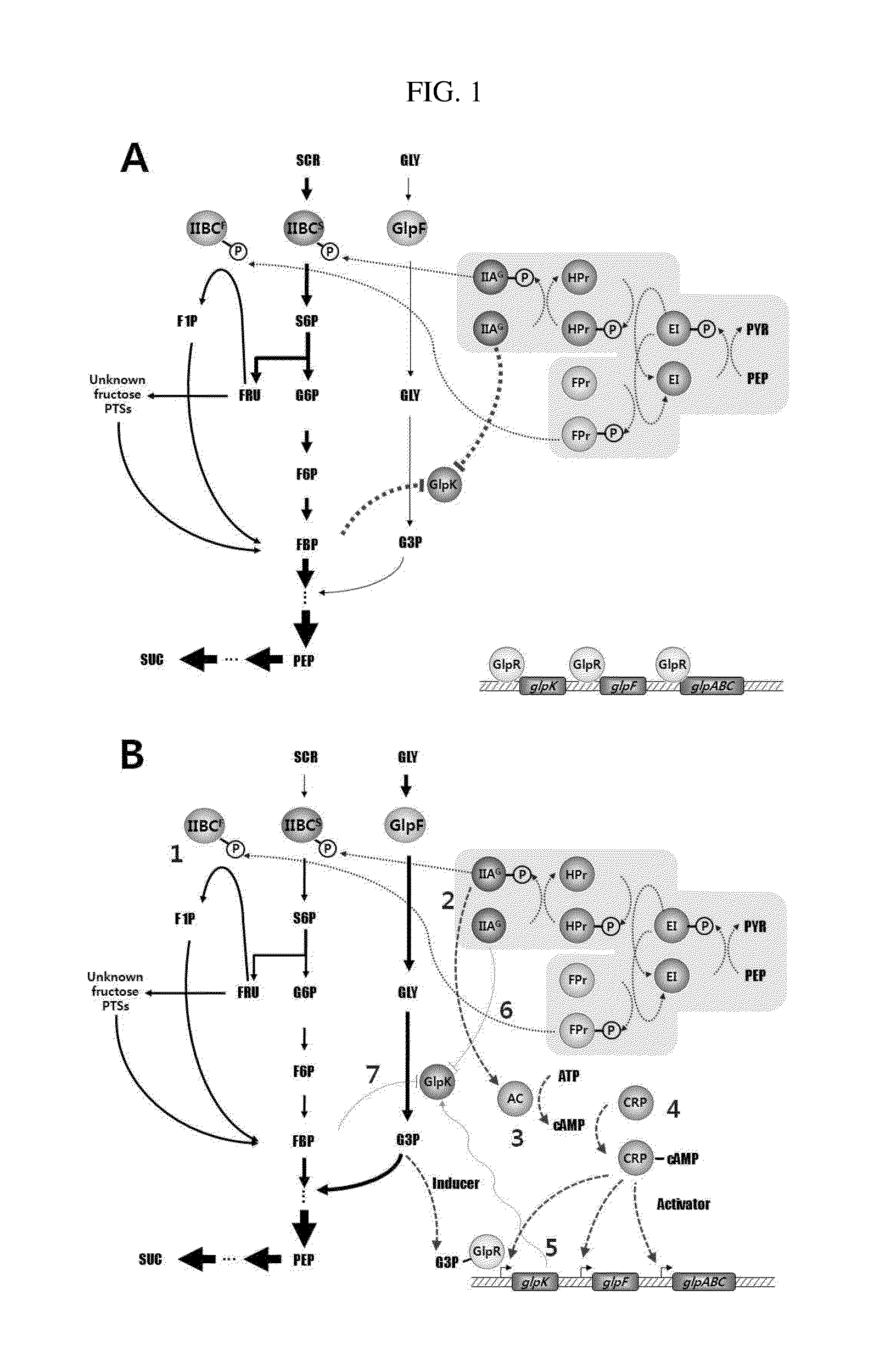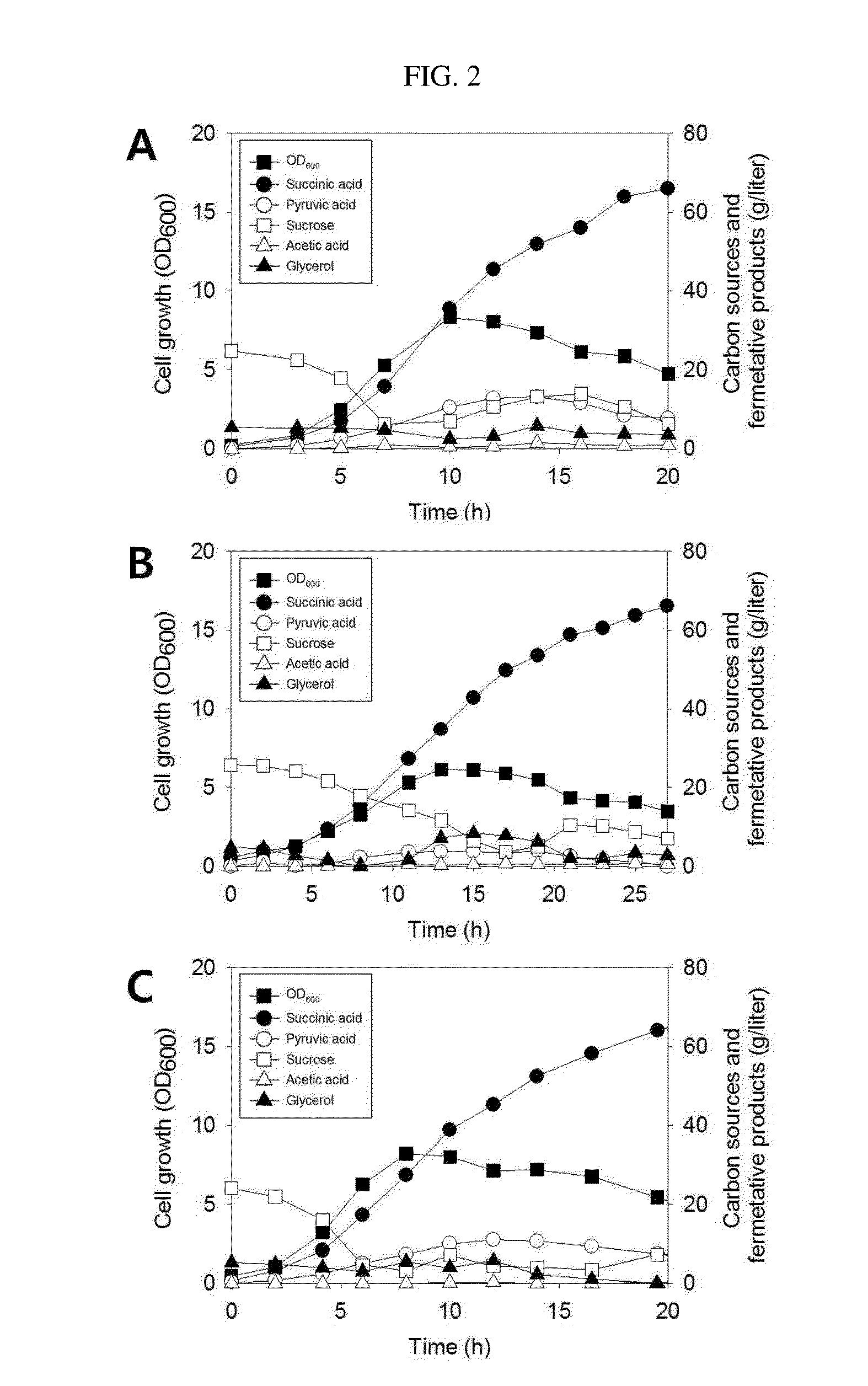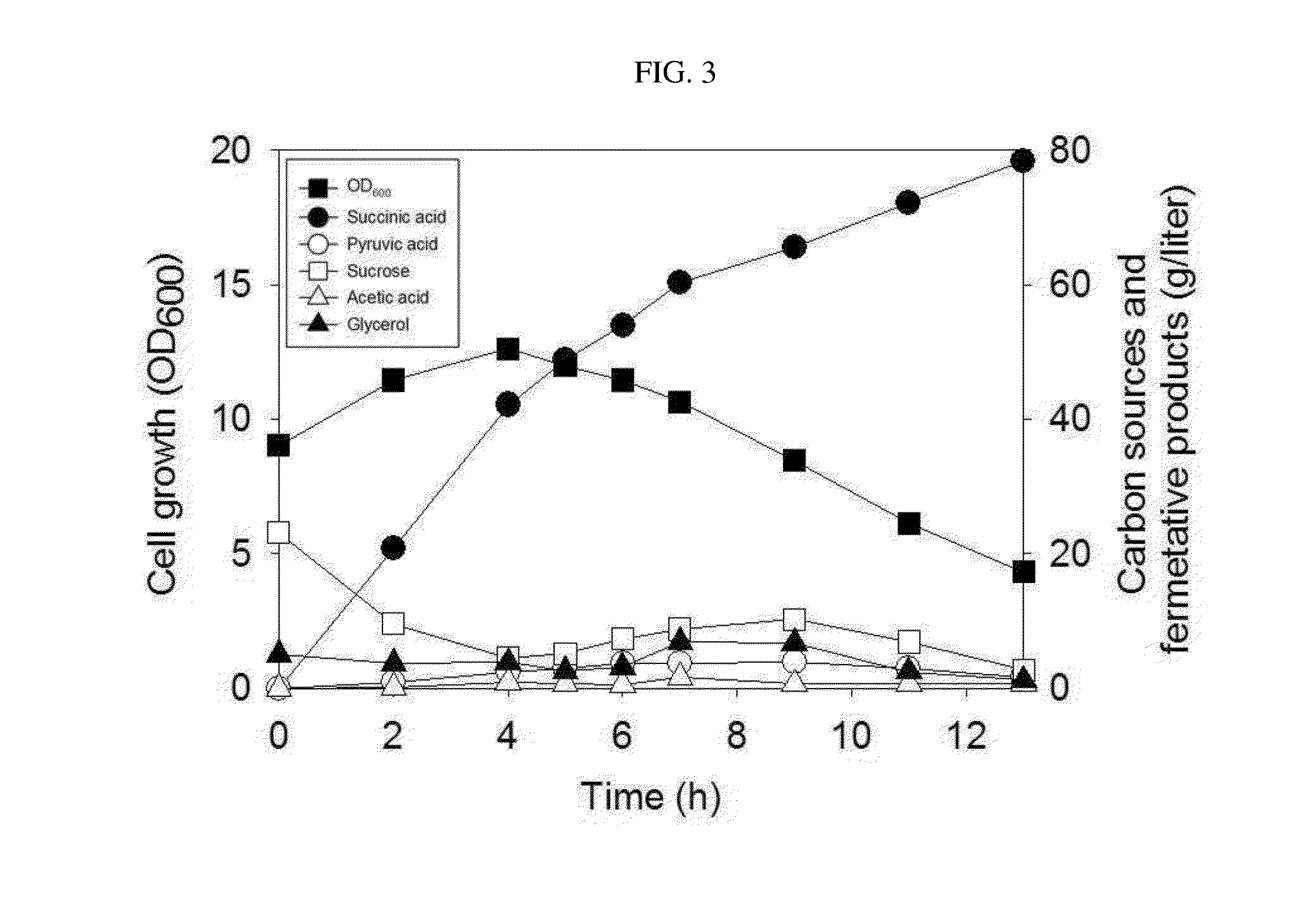Novel mutant microorganism producing succinic acid simultaneously using sucrose and glycerol, and method for preparing succinic acid using same
a technology of sucrose and glycerol, which is applied in the field of new mutant microorganisms producing succinic acid simultaneously using sucrose and glycerol, can solve the problems of low efficiency, low productivity, and inability to maximize the productivity and yield of succinic acid, and achieve the effect of maximizing the production yield
- Summary
- Abstract
- Description
- Claims
- Application Information
AI Technical Summary
Benefits of technology
Problems solved by technology
Method used
Image
Examples
example 1
Construction of fruA-Deleted Vector (pSacHRO6fruA)
[0058]In order to delete the fruA gene (fructose phosphotransferase-encoding gene) from the genome of a succinic acid-producing microorganism by homologous recombination, a gene exchange vector was constructed in the following manner. First, PCR was performed using the genomic DNA of M. succiniciproducens MBEL55E (KCTC0769BP) as a template and each of a primer pair of SEQ ID NOS: 1 and 2, a primer pair of SEQ ID NOS: 3 and 4 and a primer pair of SEQ ID NOS: 5 and 6, thereby obtaining PCR fragments containing a fruA left homologous region (HL), a chloramphenicol (Cm) resistance gene and a fruA right homologous region (HR), respectively.
[0059]Then, overlapping PCR was performed using the above three PCR fragments as a template and primers of SEQ ID NOS: 1 and 6, and the resulting DNA fragment was digested with SacI and PstI and introduced into a pSacHR06 vector, thereby constructing a pSacHR06fruA vector.
SEQ ID NO: 1:5′-ATCGCGGATCCGGTG...
example 2
Construction of M. succiniciproducens PALFK Strain
[0060]A mutant strain was constructed by deleting fruA from the genome of M. succiniciproducens PALK (KCTC10973BP) using the vector pSacHR06fruA for deleting the fruA gene, constructed in Example 1.
[0061]Specifically, M. succiniciproducens PALK (KCTC10973BP) was plated on BHI (Brain-Heart Infusion) solid medium and cultured at 39° C. for 36 hours. The colony formed was inoculated in 10 mL of BHI liquid medium and cultured for 12 hours. The sufficiently grown cell culture broth was inoculated in 100 mL of BHI liquid medium at a concentration of 1% and cultured in a stationary incubator for 39° C.
[0062]When the culture broth reached an OD600 of about 0.3-0.5 after about 4-5 hours, it was maintained at 0-4° C. for 20 minutes such that the cells were no longer grown. Then, the culture broth was centrifuged at 4° C. at 4,500 rpm for 15 minutes to collect cells. Then, the cells were resuspended in 200 mL of 10% glycerol solution at 4° C. a...
example 3
Construction of pME18glpK22 Vector And Construction of M. succiniciproducens PALKG Strain Introduced With the Vector
[0065]In order to obtain a DNA containing an E. coli glycerol kinase-encoding gene (glpK22), PCR was performed using the genomic DNA of Escherichia coli K-12 MG1655 (ATCC 47076; American Type Culture Collection, Manassas, Va., USA) and each of a primer pair of SEQ ID NOS: 11 and 12, a primer pair of SEQ ID NOS: 13 and 14 and a primer pair of SEQ ID NOS: 15 and 16. Then, PCR was performed using the resulting three PCR products as a template. The PCR product contained the glpK22 gene in which the 913th base pair of the coding sequence has adenosine converted from guanine of the glpK gene of the original E. coli K-12 MG1655. It is known that the glycerol kinase which is expressed from the glpK gene undergoes less allosteric repression caused by FBP and IIA than non-mutated glpK. (Pettigrew et al., J. Bacteriol., 178:2846, 1996).
SEQ ID NO: 11:5′-ACTCCGGAATTCAACGCACTGACAATC...
PUM
| Property | Measurement | Unit |
|---|---|---|
| wt % | aaaaa | aaaaa |
| temperature | aaaaa | aaaaa |
| concentration | aaaaa | aaaaa |
Abstract
Description
Claims
Application Information
 Login to View More
Login to View More - R&D
- Intellectual Property
- Life Sciences
- Materials
- Tech Scout
- Unparalleled Data Quality
- Higher Quality Content
- 60% Fewer Hallucinations
Browse by: Latest US Patents, China's latest patents, Technical Efficacy Thesaurus, Application Domain, Technology Topic, Popular Technical Reports.
© 2025 PatSnap. All rights reserved.Legal|Privacy policy|Modern Slavery Act Transparency Statement|Sitemap|About US| Contact US: help@patsnap.com



